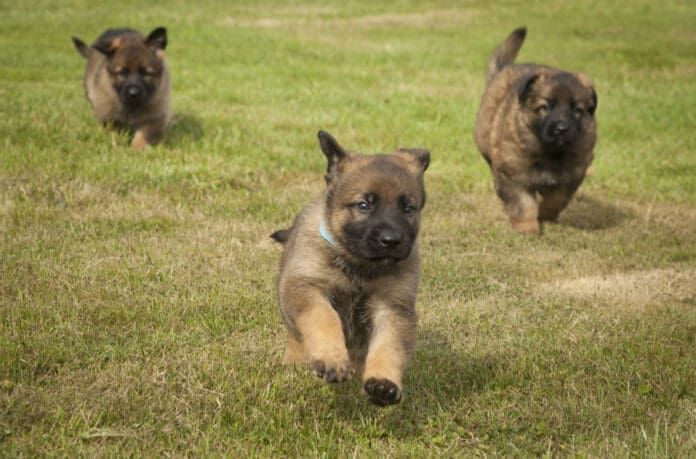Osteochondritis dissecans, or OCD, is an orthopedic problem in dogs. It is a defect in the joint cartilage that causes pain and lameness. Without treatment, osteoarthritis will commonly develop with age. The most common location for OCD is in a dog’s shoulder joint, but it can also be found in elbows, hips, stifles, and hocks. Shoulders are the most common spot for osteochondritis dissecans, but they have the best prognosis for a sound, full life. OCD in elbows likely has lifelong effects.
Causes of OCD in Dogs
Causes of osteochondritis dissecans are plentiful and may have more than one trigger. This defect is most often seen in young, large-breed dogs, around the ages of 6 to 12 months. Males are more commonly affected than females.
Diet is a factor, especially if the pup has been fed a diet that is high in energy and protein. The calcium:phosphorus ratio is very important for these rapidly growing dogs. Toss into the mix a genetic OCD predisposition and wild exercise like allowing the pup to jump on and off beds or furniture or run excessively, and you have created the perfect conditions for OCD to develop.
Signs of OCD
Most cases of osteochondritis dissecans start with a mild limp or pain when the affected joint is handled or manipulated. The joint may be swollen and feel warm. Although the symptoms may seem to be in just one area, multiple joints can be involved.
The clinical condition starts with a simple crack in the joint cartilage that normally acts as a cushion between the bones of the joint. This crack can progress to a flap and leave a divot type lesion behind. The diseased cartilage piece may break loose and be free in the joint. The loose piece is known as a “joint mouse,” and it can cause severe pain and lameness.
Diagnosis of Osteochondritis Dissecans
OCD diagnosis is generally made via radiographs (X-rays) and a clinical exam.
If the osteochondritis dissecans is caught very early, crate rest and exercise restriction may allow the damaged cartilage to heal. Almost always, however, surgery is necessary to remove the damaged cartilage and clean up the area to remove any fragments. Postoperative recovery includes limiting exercise to allow the cartilage to heal.
The prognosis for osteochondritis dissecans can vary with the amount of damage and how long the joint has been affected.






